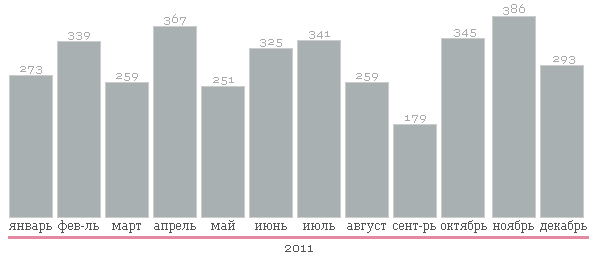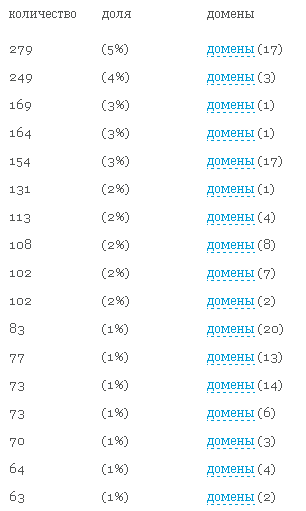About tech support and CMS users
About five years ago, a friend of mine was an employee of a mobile operator. One fine summer Friday night, we agreed to meet in order to drink kvass in the cafe, but as always he was late at work and I drove after him so as not to waste time. Walking through the corridors of the cellular company, I noticed the subscriber support department, which was like an aquarium, behind a transparent wall, but quite soundproof. There were about ten people, mostly girls, all with headsets on their heads and very concerned faces. Until that moment, I didn’t really think about how it works, when I call in support of a mobile operator with my cellular problems and a girl answers me. But then he thought. Indeed, in fact, support around the clock, thousands of subscribers, people are dealing with completely different problems. And the operator must be correct, accurate and ultimately help the subscriber. I did not find out any particularly interesting details about the work of their technical support then from my friend, although I tried. :) But now we have technical support for our diafan.CMS and in three years of work we have accumulated a lot of interesting things, which I will share with you today. So, technical support from the inside, through the eyes of supporters.
For a start, some numbers.
We have a little over 1000 users. Just a multiple of interest.
But the calls to technical support for 2011 were not a round number: 3617 questions. On average, almost 10 per day. By months and days more or less evenly. :)
In the picture: the number of requests for technical support per month with distribution by months

')
Moreover, these questions in technical support were asked only by 378 users out of a total of 1000. Accordingly, this is only 38% of the total number of our users.
What is interesting is that only 42% of users who purchased a CMS license. That is, it turns out that the remaining three fifth users who purchased diafan.CMS silently install it, configure it, use it and do not ask any questions. For comparison, in 2010, 54% of customers applied to technical support, that is, only less than half of the users were without questions. This means that our work on Frequently Asked Questions and documentation is not in vain. :)
We go further. You might think that questions are asked all equally, and this is 10 questions per user, but no. Exactly 20% of users asked only one question, and 80% asked 2 or more.
In the picture: the distribution of technical support requests by users

In this illustration, you can see that 80% of users ask 20% of the questions (well, maybe a little more, 27 percent), this just meets the Pareto golden rule. Accordingly, the remaining 80% of questions were received from 20% of users, especially pedantic, inquisitive or just lazy. :)
Here the reverse schedule is just vivid.
In the picture: TOP users by the number of calls to technical support

In the table, I publish another important parameter - the number of licenses purchased by the user for diafan.CMS. If there are about 10 or more licenses, this is most likely a partner creating websites for their clients on the basis of diafan.CMS and then the number of questions asked is justified and logical: the partner is digging the essence, finely tuning various sites, therefore he asks a lot of clarifying questions. Again, from partners it may be requests with a request to change the domain in the license and other service requests. But the presence in the top of users who bought one CMS, obviously for their own site, and asked a hundred and fifty questions discourages. :)
I think that in any technical support there are such subscribers, without which a day of service specialists cannot do. And the cell phone operator obviously calls someone once every two days and asks questions like, “Why did I have 4 signal strength sticks on my phone yesterday, and only 3 today?” :)
We also have funny questions and technical support messages. For example:
Of course, it’s ideal when the service provided is so good that it doesn’t force the user to ask for help. We are striving for this, but, I am afraid, this is utopia. If there is technical support, it will always be addressed.
For a start, some numbers.
We have a little over 1000 users. Just a multiple of interest.
But the calls to technical support for 2011 were not a round number: 3617 questions. On average, almost 10 per day. By months and days more or less evenly. :)
In the picture: the number of requests for technical support per month with distribution by months

')
Moreover, these questions in technical support were asked only by 378 users out of a total of 1000. Accordingly, this is only 38% of the total number of our users.
What is interesting is that only 42% of users who purchased a CMS license. That is, it turns out that the remaining three fifth users who purchased diafan.CMS silently install it, configure it, use it and do not ask any questions. For comparison, in 2010, 54% of customers applied to technical support, that is, only less than half of the users were without questions. This means that our work on Frequently Asked Questions and documentation is not in vain. :)
We go further. You might think that questions are asked all equally, and this is 10 questions per user, but no. Exactly 20% of users asked only one question, and 80% asked 2 or more.
In the picture: the distribution of technical support requests by users

In this illustration, you can see that 80% of users ask 20% of the questions (well, maybe a little more, 27 percent), this just meets the Pareto golden rule. Accordingly, the remaining 80% of questions were received from 20% of users, especially pedantic, inquisitive or just lazy. :)
Here the reverse schedule is just vivid.
In the picture: TOP users by the number of calls to technical support

In the table, I publish another important parameter - the number of licenses purchased by the user for diafan.CMS. If there are about 10 or more licenses, this is most likely a partner creating websites for their clients on the basis of diafan.CMS and then the number of questions asked is justified and logical: the partner is digging the essence, finely tuning various sites, therefore he asks a lot of clarifying questions. Again, from partners it may be requests with a request to change the domain in the license and other service requests. But the presence in the top of users who bought one CMS, obviously for their own site, and asked a hundred and fifty questions discourages. :)
I think that in any technical support there are such subscribers, without which a day of service specialists cannot do. And the cell phone operator obviously calls someone once every two days and asks questions like, “Why did I have 4 signal strength sticks on my phone yesterday, and only 3 today?” :)
We also have funny questions and technical support messages. For example:
- User: How do I install the server?
- User: Why do I have an inscription “TMG 16 KVA” lower than 6 and G?
This is a technical reference book, not a restaurant menu, and these beauties are irrelevant. - User: I apologize for not immediately answering - I was waiting for you for more than an hour, and then I left the company because I was upset because of the breakdown of work.
- User: Why do I have long pictures on the text?
Technical support: You simply upload non-optimized photos, for example, a photo of size 3024 * 2016 takes up as much as 4.5 MB. Although it may take 100kb, 45 times less.
User: Where can I get optimized? Is the photo 45 times smaller? - User: My site is crookedly displayed in IE6 and normally in IE8. What is the reason?
- User: I reviewed our correspondence from the very beginning. On November 1, you told me about some mysterious jquery. I will not pretend that I understand this bird language, so tell me again in Russian.
Of course, it’s ideal when the service provided is so good that it doesn’t force the user to ask for help. We are striving for this, but, I am afraid, this is utopia. If there is technical support, it will always be addressed.
Source: https://habr.com/ru/post/136017/
All Articles